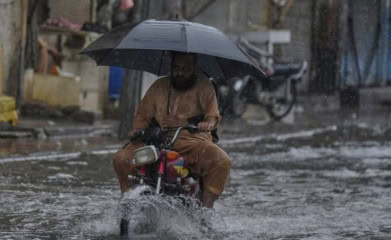ISLAMABAD – Near-normal rains and above-normal temperatures are expected in Pakistan in June 2025.
According to the Pakistan Meteorological Department (PMD), the prevailing neutral phase of the El Niño Southern Oscillation (ENSO), is expected to persist, alongside a neutral phase of the Indian Ocean Dipole (IOD).
Based on this analysis, overall, a tendency for near-normal to slightly above normal rainfall is anticipated across the central to southern parts of Pakistan. In contrast, the northern regions, including northern Khyber Pakhtunkhwa, Gilgit-Baltistan and adjoining areas of Kashmir are likely to experience normal to slightly below-normal rainfall during the forecast period.
There is a likelihood of near-normal rainfall in most parts of the country including most parts of Punjab and Balochistan, southeastern and western Sindh and central Khyber Pakhtunkhwa. Southern Punjab, northern and southwestern Sindh and northeastern Balochistan may get above normal rainfall, whereas, the northern Khyber Pakhtunkhwa, Gilgit-Baltistan and adjoining parts of Kashmir are likely to get below normal rainfall during June 2025.
Mean temperatures are expected to remain above normal nationwide, with maximum departure over Kashmir, Gilgit-Baltistan and northern Khyber Pakhtunkhwa.
Impacts: Although the general outlook for the rainfall is normal to slightly above normal but the possibility of an extreme rainfall events such as gust, microscale downpour, tornadoes and hail cannot be ruled out. Heavy rainfall events may cause urban flooding in metropolitan areas as well as flash flooding in hill torrents of Koh-e-Suleman, AJK, and KP.
Rainfall will also replenish water reservoirs and groundwater resources. Occasional strong winds, dust storm, and hailstorm may affect the seasonal crops, vegetables and orchard. The atmospheric conditions are supportive for the likelihood of heatwave development; especially over the plain areas of the southern half of the country.
Anticipated higher temperatures in high-altitude regions are expected to accelerate snowmelt in the northern areas which may replenish water reservoirs. Above-normal temperatures over Gilgit-Baltistan will cause snow melt that may contribute in glacier related hazards such as GLOF.



















